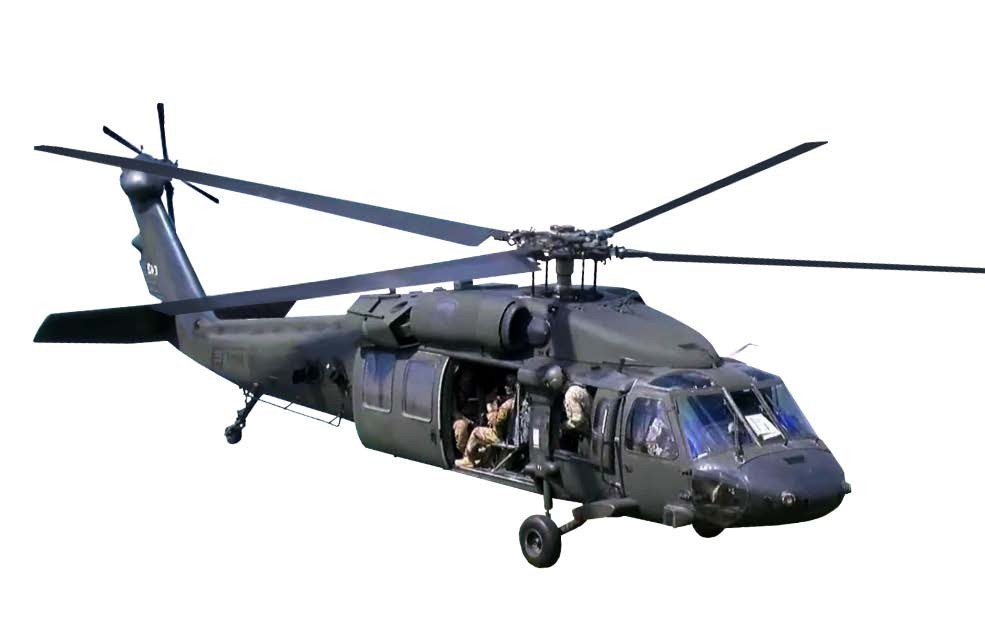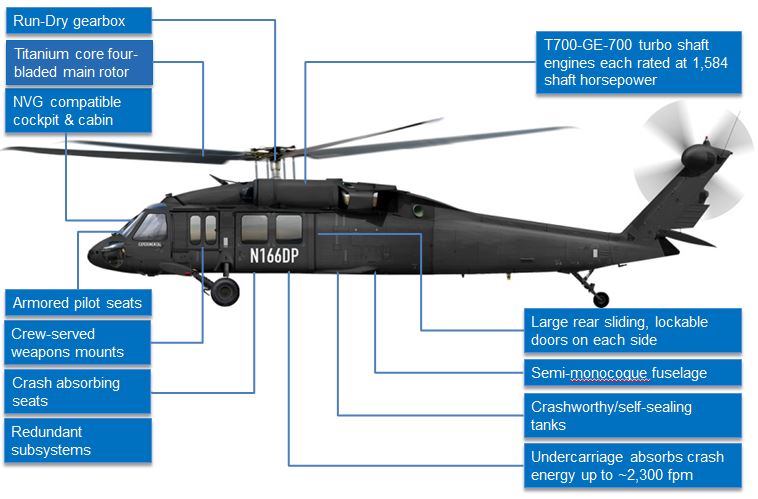Important Realities and Insights About the UH-60 Helicopter
The UH-60 helicopter, a cornerstone of modern military aviation, has actually evolved significantly since its intro in 1979. Recognizing the details of the UH-60's function exposes an intricate story of advancement and adjustment that benefits even more exploration.
Background of the UH-60
The UH-60 Black Hawk helicopter was created in the late 1970s as component of the United States Army's campaign to change the older UH-1 Iroquois. The demand for an extra flexible, resilient, and capable airplane developed from the lessons discovered during the Vietnam Battle, where the restrictions of the UH-1 emerged. In 1972, the Military started a program to procure a brand-new energy helicopter, culminating in an affordable style phase that saw numerous makers submit propositions.
Sikorsky Aircraft was inevitably granted the contract in 1976, and the initial prototype of the Black Hawk took flight in 1974. Its layout concentrated on innovative innovation, including a four-blade blades system and a modular building that enabled fast field upkeep and adaptability to numerous objectives. Formally going into solution in 1979, the UH-60 rapidly came to be the backbone of Military aviation, offering in a wide range of duties such as troop transportation, medevac, and logistical assistance.
Throughout the years, the Black Hawk has gone through various upgrades and adjustments, strengthening its status as a necessary asset in armed forces procedures around the globe (UH 60). Its durable efficiency continues to fulfill the evolving demands of modern-day warfare
Design and Functions
Integrating innovative design concepts, the UH-60 Black Hawk features a smooth, wind resistant design that boosts its efficiency and performance. This twin-engine energy helicopter is characterized by its distinctive silhouette, with a high-mounted, four-blade primary rotor system that gives outstanding lift and security. The rotor blades are constructed from composite materials, adding to their resilience and minimizing maintenance requirements.
The fuselage is made for ideal weight circulation and architectural honesty, enabling a maximum gross weight of roughly 22,000 extra pounds. The cabin layout helps with versatile arrangements, fitting different objectives, from army transport to medevac operations. In addition, the cockpit is geared up with advanced avionics, including electronic screens and multi-functional systems that boost situational understanding.
The UH-60 additionally includes composite products in its airframe, which decrease radar cross-section and improve survivability in hostile environments. Its retractable landing gear enhances the airplane's profile, more adding to its wind resistant efficiency. Overall, the thoughtful integration of design aspects and materials not just boosts the Black Hawk's functional capacities however also guarantees that it remains a crucial possession for objectives across diverse surfaces and conditions.
Operational Abilities


The UH-60 is check here furnished with innovative avionics and navigating systems, helping with procedures in tough climate condition and low presence circumstances. Its robust layout allows it to perform in high-altitude and severe temperature conditions, even more prolonging its functional variety. The helicopter's twin-engine configuration offers redundancy and boosted performance, guaranteeing reliability during crucial objectives.
Furnished with innovative interaction systems, the Black Hawk improves situational awareness and sychronisation among army units. Additionally, its ability to carry out aerial reconnaissance and support close air assistance goals underscores its essential role on the battlefield. In general, the UH-60 Black Hawk's operational abilities are a testament to its importance in modern-day armed forces aeronautics, successfully satisfying the demands of a swiftly developing functional landscape.

Alterations and variations
Different variations and modifications of the UH-60 Black Hawk have actually been established to meet details objective demands and boost its functional flexibility. The most noteworthy variant is the UH-60L, which presented updated engines, boosted avionics, and enhanced freight capacity. Furthermore, the UH-60M variant functions progressed digital avionics, a more effective engine, and improved survivability systems, making it suitable for a bigger variety of goals.
The HH-60G Lead Hawk is an additional specialized version, developed for search and rescue procedures. It is geared up with innovative navigation systems, exterior fuel tanks, and medical evacuation abilities. Similarly, the MH-60R Seahawk is maximized for anti-submarine warfare and maritime procedures, boasting innovative radar and sonar systems.
In addition, the armed variants, such as the AH-60, are changed for direct attack functions, featuring tool systems like rockets and device guns. The UH-60's adaptability is further showcased in its capability to be fitted with mission-specific equipment, including freight hooks for transport, troop transport interiors, and reconnaissance sensors.
These modifications and variants highlight the Black Hawk's vital duty in modern military operations, showcasing its capability to adapt to progressing goal needs.
Function in Humanitarian Efforts
The UH-60 Black Hawk has tipped up to play a vital role in altruistic efforts around the globe, demonstrating its versatility past military applications. This multi-mission helicopter is outfitted to carry out a selection of objectives, including clinical evacuations, catastrophe relief, and logistical support in difficult atmospheres.
Throughout natural disasters, such as earthquakes and cyclones, the Black Hawk has actually proven important for transporting relief products and personnel to influenced areas. Its ability to run in ascetic problems permits it to reach remote locations that may be inaccessible by ground transport, ensuring timely aid to those in need.
In Addition, the UH-60 is often made use of for medical evacuation goals, click over here promptly transferring hurt individuals to clinical centers. Its innovative medical capabilities, including space for medical employees and equipment, make it possible for life-saving interventions throughout essential circumstances.
In worldwide procedures, the Black Hawk often teams up with altruistic organizations, showcasing its flexibility and dependability. By leveraging its capabilities, the UH-60 not just supports army purposes yet likewise plays a necessary function in saving lives and reducing suffering during altruistic crises worldwide.
Conclusion
The UH-60 helicopter has developed itself as an essential property in army procedures given that its introduction, characterized by its durable design and functional capabilities. Its different setups deal with a vast array of objectives, from army transport to medical evacuation. Moreover, the UH-60's contributions extend past combat, playing a substantial role in altruistic initiatives worldwide. The continuous advancement of this aircraft underscores its importance in contemporary aviation and its versatility to fulfill diverse operational check demands.
The UH-60 Black Hawk helicopter was established in the late 1970s as component of the United States Military's initiative to change the older UH-1 Iroquois.Including innovative engineering concepts, the UH-60 Black Hawk includes a sleek, aerodynamic style that enhances its performance and performance.Enhanced style and advanced design permit the UH-60 Black Hawk to excel in a selection of functional roles. Overall, the UH-60 Black Hawk's functional abilities are a testament to its significance in modern army aviation, effectively satisfying the needs of a rapidly advancing functional landscape.
Numerous versions and alterations of the UH-60 Black Hawk have been developed to meet particular mission needs and enhance its functional flexibility.
Comments on “Trick Advantages of the UH 60 for Special Workflow and Rescue Objectives”